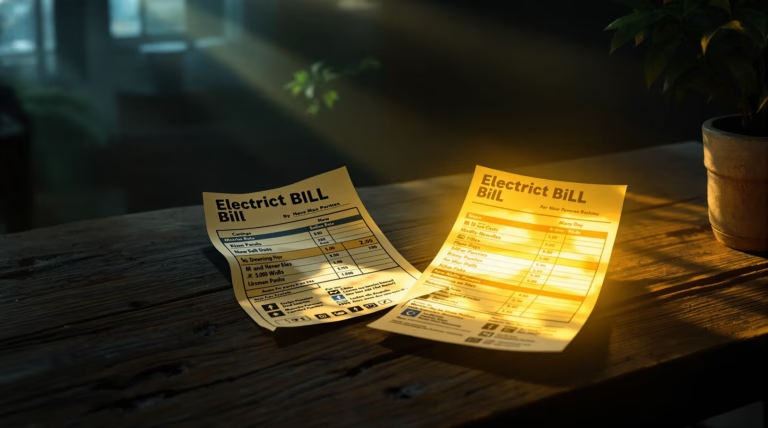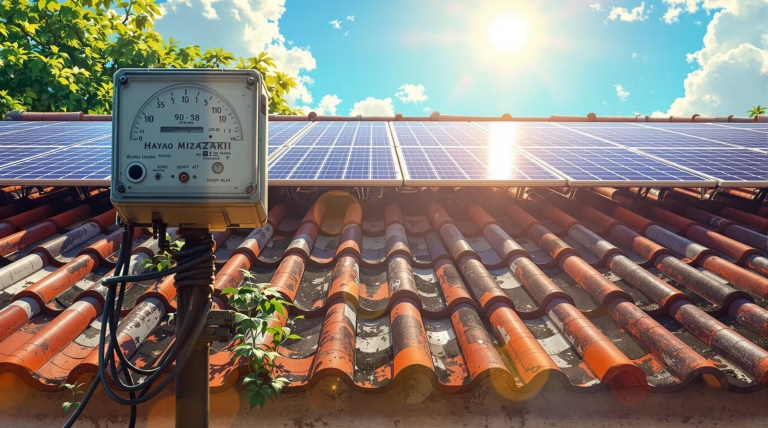How Do Solar Panels Work with Your Electric Bill?
Looking to understand how solar panels can transform your monthly electricity costs? Discover how this renewable energy solution works with your electric bill and learn about the potential savings you could achieve through solar power adoption.
Understanding How Solar Panels Impact Your Electric Bill
Solar panels revolutionize your electricity billing by enabling you to generate your own power instead of relying solely on utility companies. These systems capture sunlight and convert it into usable electricity, powering your home’s appliances, lighting, and electrical systems. This self-generated energy directly reduces your dependence on grid electricity.
- System size and capacity
- Household energy consumption patterns
- Local electricity rates
- Seasonal sunlight variations
- Geographic location
Most homeowners experience a 50-90% reduction in their electric bills with properly sized solar systems. In optimal conditions, some achieve near-zero electricity costs, though connection fees typically remain.
The Basics of Solar Energy and Electric Bills
Solar panels offset your grid electricity consumption through a dynamic relationship tracked by your electric meter. During daylight hours, your panels generate electricity for immediate use, with excess power flowing back to the grid, often earning credits through net metering programs.
When solar production is low or absent, you draw power from the grid. Your bill reflects the net difference between grid consumption and solar contribution, resulting in significantly reduced charges plus any fixed connection fees.
Common Misconceptions About Solar Panels and Electric Bills
| Misconception | Reality |
|---|---|
| Zero electric bills after installation | Most homeowners remain grid-connected with reduced bills and fixed charges |
| Immediate profit from power sales | Systems primarily offset personal consumption rather than generate income |
| Instant savings | Benefits accumulate over 25-30 year system lifespan |
The Role of Net Metering in Reducing Your Electric Bill
Net metering serves as a crucial financial benefit for solar panel owners. This billing mechanism uses the utility grid as a virtual battery, storing excess generated electricity for later use. When your system produces surplus power, it flows back to the grid, creating credits on your account.
How Net Metering Works
The net metering system creates a billing arrangement between homeowners and utility companies. Your electric meter tracks both electricity contribution and consumption, running in reverse when excess power is generated. Credits earned help offset costs when drawing power from the grid during low-production periods.
Utility Companies and Net Metering Policies
Net metering policies vary significantly by location and utility provider. While some regions offer full retail rate credits (1:1 exchange), others have adopted less generous compensation structures. For example, California’s NEM 3.0 policy reduced buyback rates to approximately 25% of retail value, significantly impacting investment returns.
Enhancing Solar Efficiency with Battery Storage
Battery storage transforms traditional solar panel systems by fundamentally changing their interaction with your electric bill. While solar panels effectively reduce electricity costs during daylight hours, battery storage creates a complete energy solution by capturing excess electricity for use during non-productive periods.
This integration allows you to store valuable excess energy locally instead of sending it to the utility grid. During peak evening consumption hours, when electricity rates typically soar, your stored energy becomes particularly valuable. Solar systems with battery storage typically deliver an additional 20-40% reduction in electric bills compared to standalone solar installations, especially in regions with time-of-use billing structures.
Benefits of Solar Battery Storage
- Maximized self-consumption of solar-generated electricity
- Reduced exposure to peak electricity rates
- Enhanced energy security during grid outages
- Potential revenue through utility demand response programs
- Protection against unfavorable net metering changes
Unlike standard grid-tied systems that shut down during blackouts, solar systems with battery backup maintain power to essential circuits. This capability eliminates the need for conventional generators and their associated costs while providing crucial energy security.
Choosing the Right Battery Storage System
| Factor | Consideration |
|---|---|
| Battery Capacity | 10-15kWh typical range for residential use |
| Power Rating | Must support essential appliance operation |
| Technology Type | Lithium-ion dominates current market |
| Smart Management | Can increase savings by 10-15% through optimization |
The ideal battery system balances initial investment against long-term savings while providing sufficient capacity for critical power needs. Advanced systems with smart energy management capabilities can predict usage patterns, weather conditions, and rate changes to optimize energy storage and consumption automatically.
Maximizing Savings Through Energy Efficiency
Combining energy efficiency measures with solar installation can boost electric bill savings by an additional 15-30%. This comprehensive approach reduces baseline electricity demand, allowing your solar system to offset a greater percentage of consumption and potentially enabling installation of a smaller, more cost-effective system.
Energy Efficiency Upgrades for Your Home
- Home envelope improvements – 20-30% reduction in HVAC energy use
- Smart thermostats – 10-15% decrease in heating/cooling costs
- ENERGY STAR appliances – 20-50% reduction in electricity consumption
- LED lighting – 75% less energy use than traditional bulbs
- Pool and outdoor lighting controls – prevention of wasteful operation
When these efficiency measures work together with solar panels, many homeowners achieve near-zero electric bills, maintaining only minimal connection fees. The synergy between energy efficiency and solar power creates a powerful combination for maximizing long-term savings.
Consultations and Energy Evaluations
Professional energy evaluations deliver data-driven insights through comprehensive assessments that include:
- Blower door testing for air leak detection
- Thermal imaging to identify insulation gaps
- Detailed utility bill analysis for consumption patterns
- Customized improvement recommendations
- Return on investment calculations
During solar consultations, experts analyze several critical factors to design an optimally sized system:
| Assessment Factor | Impact on System Design |
|---|---|
| Roof Orientation | Determines optimal panel placement |
| Shading Analysis | Identifies potential production limitations |
| Electricity Usage | Guides system sizing requirements |
| Efficiency Upgrades | Can reduce required system size by 25% |
These evaluations demonstrate how combining targeted efficiency improvements with solar installation creates more cost-effective solutions. For example, investing $5,000 in strategic efficiency upgrades can reduce your required solar system size by 25%, resulting in $7,500 savings on installation costs while delivering equivalent or better electric bill reduction.
Exploring Solar Financing Options
Solar financing has evolved to accommodate various budgets and homeowner preferences. The primary options include direct purchases, solar loans, and lease or power purchase agreements (PPAs). Direct purchases typically result in 70-100% electric bill reductions while retaining all financial incentives. Solar loans offer immediate positive cash flow, as combined loan payments and reduced electric bills often cost less than previous utility expenses.
Understanding Solar Loans and Leases
- Solar loans offer ownership benefits with 5-20 year terms
- Interest rates range from 2.99% to 6.99% based on credit score
- Immediate positive cash flow through reduced combined expenses
- Full qualification for tax credits and incentives
- Complete ownership of the system and its benefits
Solar leases provide an alternative with zero money down and included maintenance, but offer more modest savings of 10-30% on electric bills. While leases don’t qualify for tax incentives, they suit homeowners prioritizing maintenance-free operations or those with insufficient tax liability to benefit from incentives.
Federal Tax Credits and Incentives
The federal solar investment tax credit (ITC) offers a 30% tax credit through 2032, directly reducing federal tax liability. For a $20,000 installation, this translates to $6,000 in immediate tax savings. Additional state and local incentives can further reduce costs by 10-20% through:
- State tax credits and rebates
- Property tax exemptions
- Utility performance-based incentives
- Net metering benefits
- Local government incentives
This combination of incentives typically enables complete system payback within 5-8 years, followed by decades of nearly free electricity. Consulting with solar professionals ensures access to all available incentives in your location.







